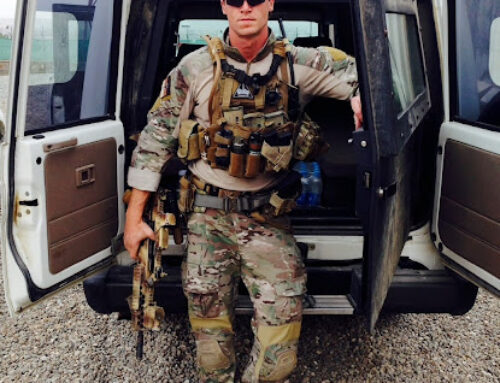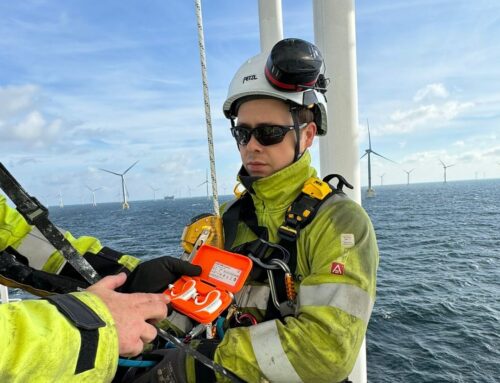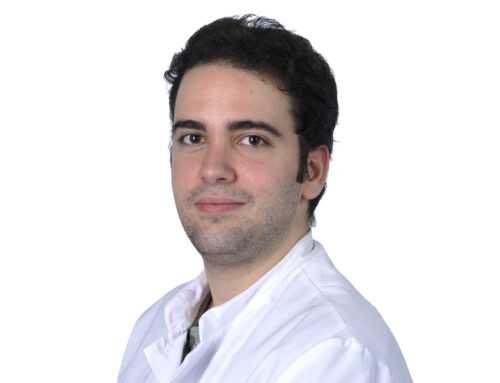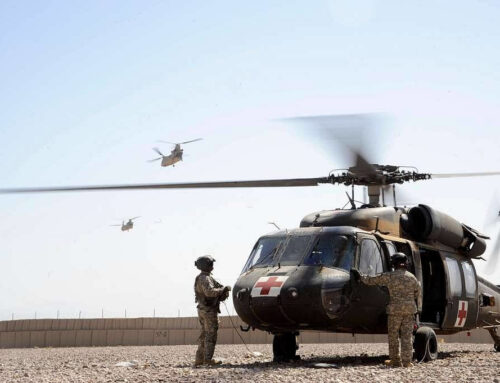Paramedic Jonathon Will about challenges of wilderness medicine

Photo credit: Unique expeditions mountain medicine course Scotland
Harsh conditions in the mountains, deserts, or any environment far from established infrastructure pose unique challenges for rescue teams. When providing medical care in these remote settings, every decision counts and resources are limited. One person who knows these situations inside out is Specialist Paramedic Jonathon Will. In this interview, he shares what really matters during wilderness rescue missions and why he sees great potential in compact, lightweight monitoring technologies like those developed by cosinuss°.

About the Interviewee:
Jonathon Will is a paramedic and healthcare leader with a career spanning frontline emergency care in London to national clinical & strategic roles in Scotland. After training with the London Ambulance Service in 2008, he worked in both pre-hospital and hospital settings before returning to rural Scotland, focusing on remote and urgent care. He now leads Urgent and Unscheduled Care for a Scottish health board. He is also a qualified Wilderness Emergency Medical Technician, MREW CasCarer course director, WEMSI & Unique Expedition faculty and Tayside Mountain Rescue Medical Officer.
How did you get involved in mountain rescue, and what motivates you in your work?
In a relatively short period, I’ve covered everything from front‑line operational work to national strategic roles: I retrained as a paramedic back in 2008 with the London Ambulance Service. For several years I worked on ambulances and in fast‑response cars across the city. Then, I was fortunate enough to be invited to become one of the first paramedics in the UK to work directly in a hospital setting. I joined an Accident & Emergency department, looking after the highest‑acuity patients.
After six years on the road, it felt like I was finally doing the job I’d signed up for. Every patient required immediate stabilization, and the role was genuinely at the cutting edge of practice. In that position, my time was split roughly 75% clinical work and 25% management—so I was still treating patients most of the time, but I also had dedicated moments to support the team, refine equipment and processes, and drive continuous improvement.
After my wife passed away, I moved back to rural Scotland and found myself back on the ambulance, but in a very different environment. It may seem quieter up there, but the distances mean you’re almost delivering prolonged field care – patients can be in the back of the ambulance for hours. I’ll never forget asking for six backup ambulances at a major crash and being told we had one unit 45 minutes away! Even the trauma team took nearly an hour to arrive. That taught me a lot about adapting my practice to meet local needs. Over time, I progressed to become a paramedic practitioner and then a specialist and advanced paramedic. I joined the clinical directorate as Clinical Effectiveness Lead, focusing on care pathways and flow navigation, making sure patients get to the right hospital first time, especially when travel times are long. I also developed professional‑to‑professional support networks for colleagues in remote areas, using technology to link them with consultants in real time.
From there, I moved into policy as a National Improvement Advisor to the Scottish Government for NHS Scotland. Most recently, I’ve taken on the role of Urgent and Unscheduled Care Lead for one of the health boards.
In addition to your work in emergency medicine, you are also trained in mountain and wilderness medicine – what motivated you to do this?
I wish I could say I’d dreamed of wilderness medicine my whole life, but honestly, I stumbled into it almost by accident. When I was working as a remote paramedic in Scotland, I began to collaborate with mountain rescue teams on certain call-outs. Background-wise, I’d spent time as an outdoor instructor and kept myself fit through recreational climbing, but I wasn’t a professional mountain guide by any stretch. A key event took place, when I was dispatched with a newly qualified student paramedic to treat a lead climber who’d fallen about 25 feet and knocked three others off the crag. Two casualties were unconscious – one stranded on a ledge high up, another at the base – and two more were injured or missing. Without hesitation, I scrambled up to that ledge, began patient care, and coached my student on the ground from above. A week later, on a similarly challenging rescue in a remote valley, I helped package another climber for airlift, working alongside both the helicopter crew and the mountain rescue team. It was the team leader of the local rescue team who said to me that I had been very useful on two missions within two weeks and asked if I would like to apply for the team. So I did and that’s what started it all off: I joined the local mountain rescue team and ended up becoming their medical officer. From there, I began teaching Scotland’s Remote Rescue Medical Technician course and joined Wilderness Medical Training International as faculty and instructor. That community exposed me to humanitarian and extreme-environment medicine projects around the globe, widening my horizons even further. Today, I’m the Course Director for Unique Expeditions’ Mountain Medicine course in Scotland, and I am now looking to expand my experience with them to include high altitude, desert, jungle, and Arctic environments. What started almost by chance has grown into a real passion – combining urgent and critical care skills with the adventure and challenge of the wild.
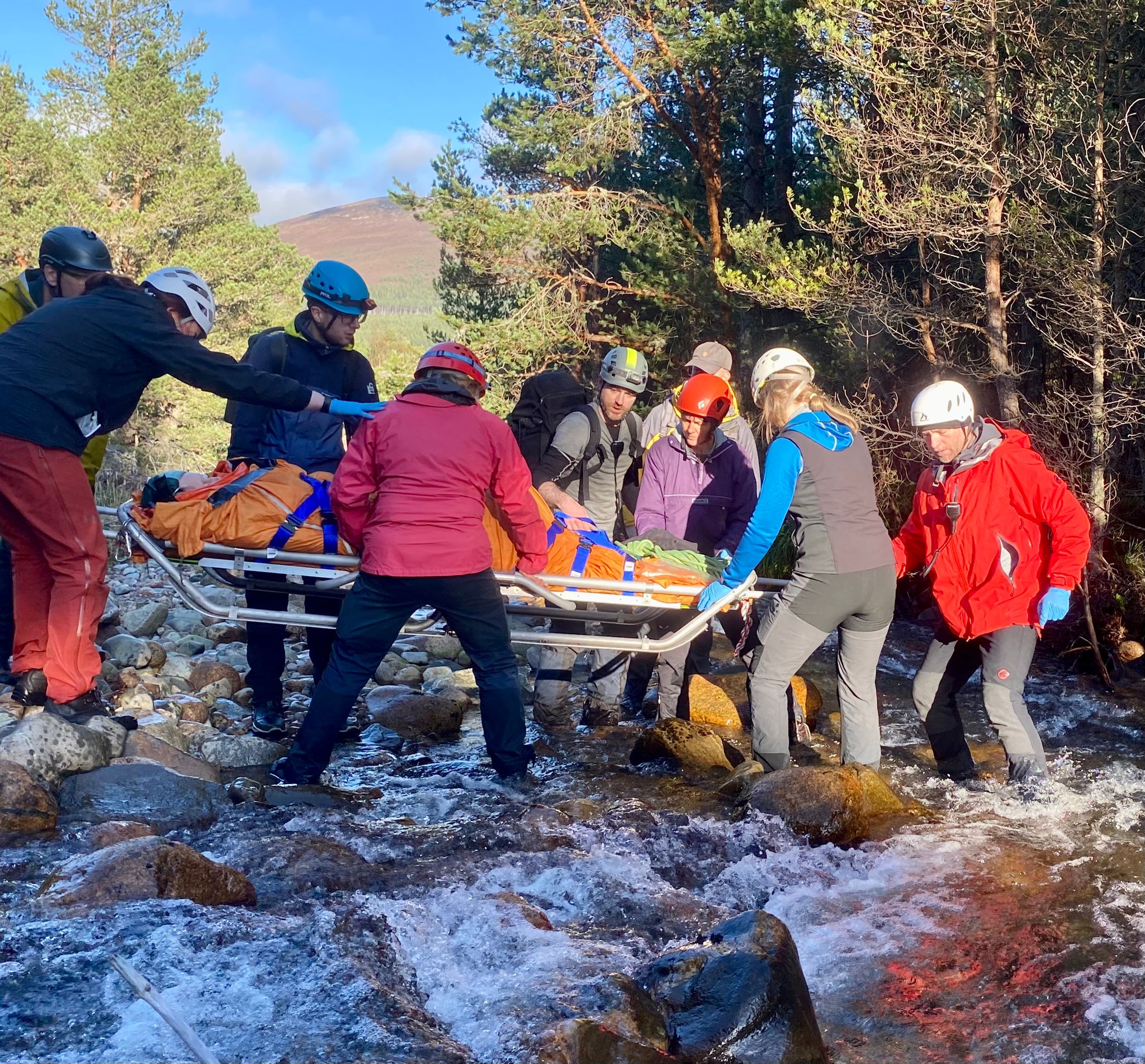
WEMSI Scotland Wilderness Emergency Medical Technician course
What particular challenges do you face during wilderness medicine missions?
Recruiting, retraining, and then continuously training volunteers is our first hurdle. In Scotland, our mountain rescue teams are staffed almost entirely by volunteer civilians who put themselves into hazardous environments, and we need to equip them to deliver high-quality, equitable medical care. While we do have doctors on call, they’re not always available, so our Emergency Medical Technicians often carry a drug formulary that even front-line ambulance technicians back in town aren’t authorized to use. That’s because our patients are beyond the reach of conventional emergency services, whether due to terrain or weather. Also, standard ambulances are limited to roadsides, air ambulances struggle in poor weather conditions, and even Coast Guard or search-and-rescue helicopters can be grounded by low clouds or high winds. We’re a 24/7 volunteer service facing steep ground, canyons, boggy moors, and extreme weather; our teams are experienced and well trained but they face the same risks as the people they are helping. Then there’s the balance between kit and mobility. On a prolonged search mission or on technical ground, every ounce counts: too much equipment slows you down, but too little can cost lives. There’s no point hauling a full complement of monitors only to arrive 40 minutes too late for a cardiac arrest. So we strip back to the essentials, prioritizing life-saving dressings, compact airway kits, and lightweight monitoring tools that give us the critical data we need without breaking our backs. In those austere environments, that compromise between speed, safety, and clinical capability becomes our constant companion.
In which situations do you need to monitor the vital signs of your patient? What kind of equipment do you usually have at hand?
It all starts with the primary survey as soon as we arrive on scene. So first of all, we want to get a baseline of where we are. We then use this information to make a decision about the care and evacuation of the patient and create a starting point for tracking trends. When I say “baseline,” I’m referring to a simple set of vital signs we can quickly gather without relying on much equipment. Respiratory rate is assessed by watching and listening. Pulse rate is felt manually at the wrist; if you can detect a radial pulse, it tells you the systolic blood pressure is at least around 80 mmHg. That’s actually a key threshold in our drug protocols—if there’s a radial pulse, we may go ahead with treatment; if not, we hold off. Temperature is usually checked with a small tympanic or forehead thermometer, but those tend to be bulky, unreliable and don’t read below 30 °C at all, vital in mountain rescue decision making. Blood pressure and auscultation with a manual cuff and stethoscope are nice in theory, but in practice, we often skip them and rely on that pulse check instead. Oxygen saturation is measured using a lightweight fingertip probe, and these days we treat oxygen like a drug—titrating it according to the patient’s SpO2 reading. Because every extra piece of kit slows us down, most teams carry only two true monitors: temperature and SpO2, and maybe a stethoscope/BP cuff if there’s room. The rest is “basics done well.” Once you’ve got your baseline, you must stop at regular intervals to reassess. On a long carry, you might set the stretcher down, unwrap the patient exposing them to the elements, to grab a set of observations. It’s makeshift and far from ideal, but the worst thing is hauling tons of equipment only to arrive too late. So we compromise: we stay light, move fast, and keep reassessing manually.

Photo Credit: Tayside MRT
So do you see an advantage in being able to continuously monitor the body temperature inside the ear canal with the cosinuss° in-ear sensor?
Yes, absolutely. When we first looked at the idea, replacing a finger-pulse oximeter and a tympanic thermometer seemed expensive. But once you start using the in-ear sensor, you realize you’re not just swapping one tool for another; you’re getting something entirely different. First, the infrared sensor measures much lower temperatures than any other device available in the UK. For our volunteer teams on scene, being able to say “the patient’s temperature is 27.3 °C” adds instant credibility. It’s another clinical data point to bring to the table and it strengthens our collaboration with the ambulance service, Helimed, SAR, and other emergency services.
Then there’s the operational flow. On a long stretcher carry, you no longer need to stop, unwrap the patient, take a temperature, heart rate and O2 saturations before rewrapping them—and risk heat loss in the process. Instead, you put the ear monitor in place and it runs continuously, so you can hand the stretcher straight over from team to team, even to the helicopter crew, without pausing for a formal reassessment. In more technical rescues, e.g. a vertical haul or a canyon lift, keeping the medic right next to the patient isn’t always possible. We wear chest rigs for radios; I simply attach a small phone-style mount there, flip it out, and the monitor screen sits right in front of me. With the °Health App I can watch SpO2, pulse rate, and temperature in real time – even from ten metres away. The doctor or another team member can mirror that feed on their own device, too. So continuous trends are a genuine game-changer. The notifications tell you if the pulse rate suddenly spikes or if the temperature starts to drop, so you know immediately whether to pause and reassess or keep going because everything is stable. In wilderness medicine, maintaining body temperature is critical; if I see the patient’s temperature falling as we carry them, I can adjust their insulation or heat packs on the fly.
In short, comparing a continuous in‑ear sensor to a finger probe and a tympanic gun is like comparing apples and pears. This technology bridges the gap between our roadside defibrillators and monitors and the minimalist ethos of wilderness medicine, doing the basics well with what we have.
In which phases of a rescue mission do you see the greatest benefit of the cosinuss° mobile patient monitoring?
I think the greatest advantages come in two key moments: the stretcher carry over long distances, and the technical phases of a rescue, like a vertical lift out of a canyon. In both cases, being able to pop a small in‑ear sensor into the patient and have continuous vital data streamed to a chest‑rig‑mounted monitor is a game‑changer. It not only gives the medic real‑time information without stopping to unpack bulky gear, but it also improves team bandwidth and efficiency: everyone sees the same data feed, transitions between teams become seamless, and it looks every bit as professional as ambulance‑grade monitoring. It bridges the gap between what we do in the wild and what we’d expect of a paramedic in a vehicle.
We’ve also used it during procedural sedation, for painful limb realignment, for instance, when patients can drift into drowsiness. Instead of constant manual checks or prodding, we simply watch the vitals on screen and know immediately if anything drifts out of range.
In short, during long carries and complex technical moves, plus anytime sedation is involved, continuous mobile monitoring delivers real benefits.

Photo Credit: Tayside MRT
Which aspects of the technology have been most beneficial to you so far, and where do you see room for improvement?
One of the greatest strengths of the cosinuss° device is its sheer simplicity: once you know to angle the infrared sensor correctly in the ear, you rarely have to second-guess its readings. In training sessions, a quick reminder on positioning is all it takes, and after that the monitor delivers reliable, continuous data without fuss. Understanding the device’s purpose, rather than simply “pop it in and hope”, means you can trust it implicitly in the field.
In many ways, cosinuss° feels like the mechanical CPR revolution all over again. Although early trials suggested that mechanical CPR devices offered no clear benefit over skilled manual compressions under ideal conditions, in practice they proved invaluable during stretcher carries and technical extractions where hands-on CPR is challenging or impossible. The cosinuss° ear monitor follows a similar logic: it may not out-perform a fingertip probe and tympanic thermometer in a lab, but in the harsh realities of wind, cold, height, and constant movement, it allows us to track vital signs continuously in situations where stopping for manual checks simply isn’t an option.
As for improvements, we’ve already seen impressive hardware iterations, so only a few refinements come to mind. An integrated GPS-tracking feature would help ensure sensors don’t get lost (i.e. conveyed with the patient). Incorporating blood-pressure measurement and reliable respiratory-rate detection would allow a single device to capture all five primary vital signs. Finally, automating documentation in the app, so that when you tap a drug name it logs the exact time of administration, would streamline our hand-written notes and give the team even more bandwidth to focus on patient care. If the sensor could then be combined with ECG patches, this would almost replace a large, heavy patient monitor, as used by paramedics in ambulances.
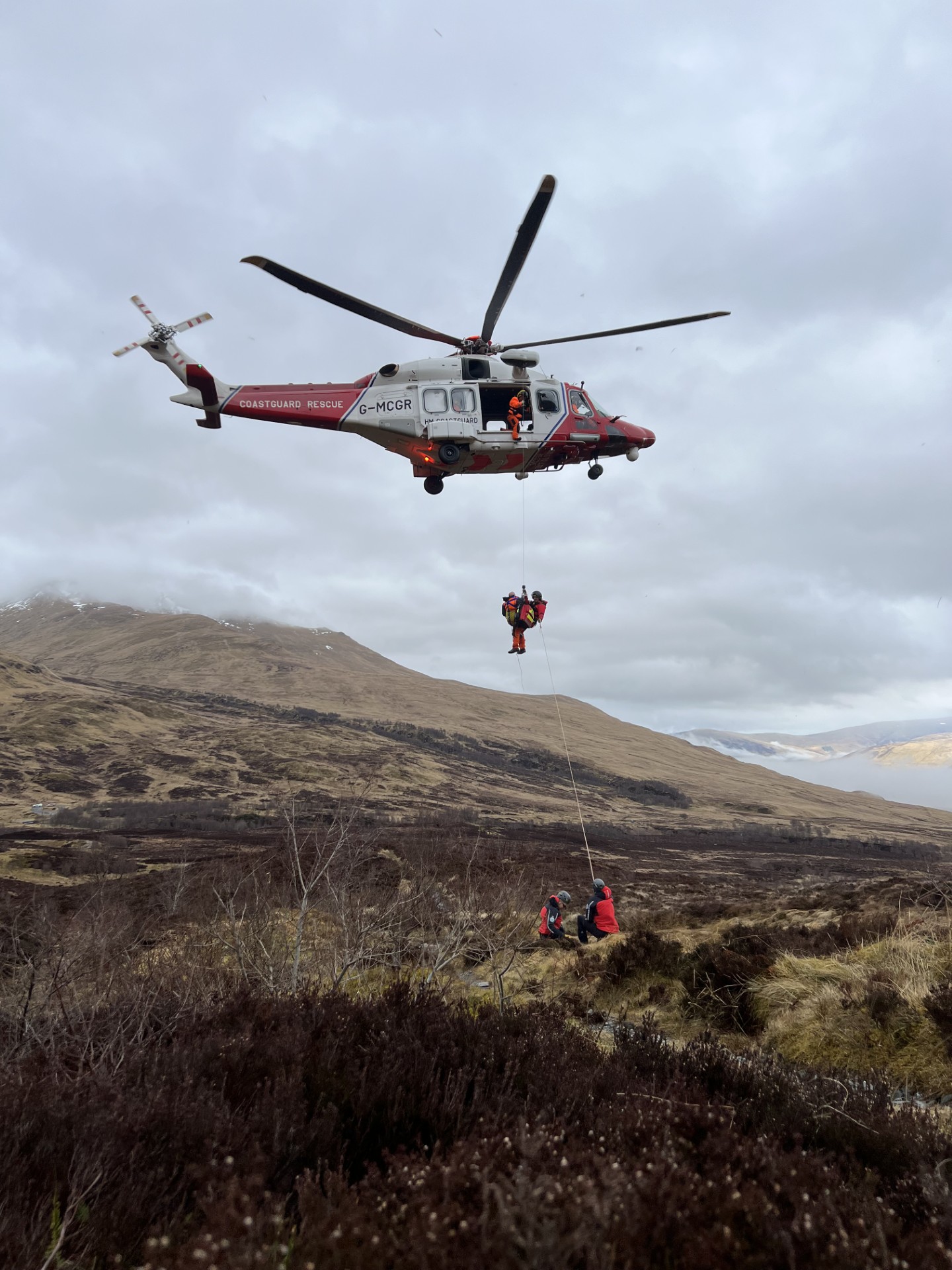
Photo Credit: Tayside MRT
How could cosinuss° play a role in making the work of rescuers in wilderness missions safer and more effective?
We often operate in places beyond the reach of conventional emergency services: harsh, remote environments where danger is always present. It’s a calculated risk; we never deliberately put our teams in harm’s way. But when you’re working in bad weather or driving winds, it robs you of bandwidth. I don’t know exactly how it happens, but it does: your situational awareness erodes just when you might need it most, and with adrenaline pumping, any loss of focus can lead to harm. So anything that gives you some of that bandwidth back – you’re not stopping constantly to take observations – helps enormously. For me, the biggest benefit is flow and pace. You insert the cosinuss° in-ear sensor once, and then continuous monitoring happens in the background. That means you’re able to move faster, because there’s no more pausing to unwrap the patient for vital checks. You also spend less time exposed to the cold, wind or altitude, and the efficiency of the team is maintained: Everyone focuses on the task at hand and not on manual readings.
So in my opinion it’s probably not built or designed or intended to create safety, but I think just by making the team more efficient, there’s an element of safety that’s built in there.

